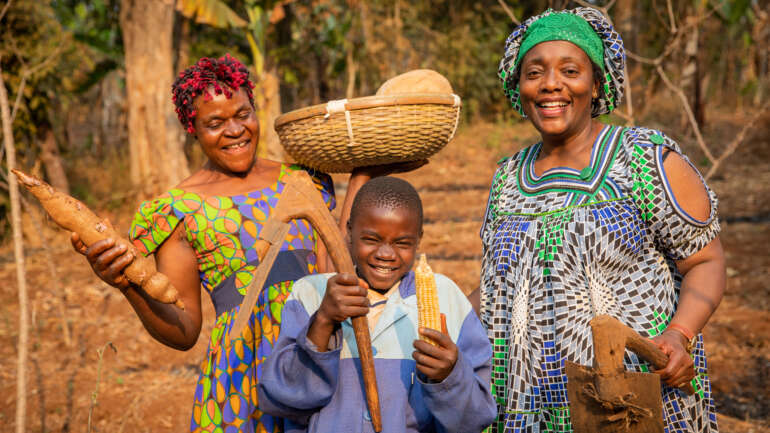In educational systems worldwide, success has long been defined by standardized test scores and classroom grades metrics that often fail to capture the true impact of education on students’ lives, particularly in underserved rural communities.
We recognize that a student who memorizes facts for an exam but cannot apply knowledge to real-world challenges has not truly succeeded. This understanding drives our commitment to measuring educational impact through a more comprehensive lens.
Our measurement approach evaluates not just what students know, but how their education transforms their lives, families, and communities. We believe that measuring real impact matters because it ensures our programs create meaningful change rather than simply impressive statistics a distinction that makes all the difference in breaking cycles of poverty in rural Ghana.
How we track and support graduation
Our first metric focuses on program completion, with a target of 85% secondary school graduation rates among our scholarship recipients.
Semingly straightforward measurement involves sophisticated tracking systems that flag early warning signs of potential dropout. When a student’s attendance drops below 90% or grades show sudden decline, our intervention protocol activates immediately.
Community mentors conduct home visits, while our educational support team works with teachers to develop personalized learning plans. This proactive approach means our completion metric does more than measure success it actively creates it by preventing educational interruption before it occurs.
Measuring continued education
We measure the percentage of our graduates who continue to higher education (with a 70% target), but this metric extends beyond simple enrollment numbers.
Our tracking includes scholarship application success rates, field of study diversity, and persistence through the first critical year of post-secondary education. For students choosing vocational paths, we measure certification completion and skill mastery through competency-based assessments.
By disaggregating this data by gender, regional origin, and socioeconomic background, we identify and address specific barriers that might otherwise remain hidden in aggregate statistics.
Our assessment approach
Rather than focusing solely on absolute achievement, we measure academic growth by tracking year-over-year improvement, with a target of 15% annual academic progress for mentored students.
Our assessment tools blend standardized measurements with locally-relevant evaluation methods developed in collaboration with Ghanaian educators. These assessments prioritize critical thinking, problem-solving, and knowledge application over rote memorization.
Additionally, we measure soft skills development through rubrics that evaluate teamwork, communication ability, and leadership potential capabilities essential for real-world success but often overlooked in traditional educational metrics.
Long-term tracking methodology
Our most ambitious measurement extends years beyond program completion, tracking career trajectories through a longitudinal database. We assess employment rates, income levels, job satisfaction, and career advancement among graduates.
For entrepreneurs, we measure business sustainability, growth metrics, and community impact. This long-view approach reveals the true value of our educational interventions in creating sustainable livelihoods and economic stability.
Measuring beneficiary contributions
Perhaps our most meaningful metric examines how program beneficiaries eventually contribute to their communities.
We track the percentage of graduates who return as volunteers or donors (targeting 30% within 10 years), but more importantly, we measure their civic engagement, mentorship of younger students, and community leadership roles.
This virtuous cycle metric demonstrates education’s power to transform not just individual lives but entire communities as knowledge and opportunity multiply through successive generations.
Beyond Numbers
While quantitative metrics provide essential insights, they cannot capture the full story of educational impact. Our qualitative assessment approaches include regular structured interviews with students and families that document changes in aspiration, self-efficacy, and family dynamics.
These narratives often reveal profound transformations that numbers alone cannot express a first-generation student inspiring younger siblings to prioritize education, or parents developing new respect for indigenous knowledge integrated into their child’s learning.
We also conduct annual community impact evaluations through focus groups and participatory assessment workshops. These sessions enable community members to define success in their own terms and evaluate our programs against locally-meaningful criteria.
This approach ensures our measurement framework remains culturally relevant and responsive to community priorities rather than imposing external definitions of success.
Technology’s Role in Measurement
Our custom CRM system built on the Salesforce platform serves as the backbone of our measurement framework. This database integrates academic records, attendance data, family circumstance updates, and intervention histories to create comprehensive beneficiary profiles. Mobile data collection tools enable field staff to update information in real-time, even in remote areas with limited connectivity.
This technology doesn’t simply store information it actively informs program improvements through sophisticated analytics that identify intervention effectiveness and emerging needs. Predictive modeling helps us anticipate challenges before they affect student outcomes, allowing for proactive rather than reactive support.
We balance this powerful data collection with rigorous privacy protections and transparent data policies. Students and families maintain control over their information through explicit consent protocols and regular opportunities to review and correct their records.
Case Study
Our data-driven approach recently transformed our girls’ STEM education initiative. When tracking revealed that female students showed strong initial interest but declining persistence in science courses, we conducted focused interviews to understand the barriers.
The resulting insights led us to pair technical instruction with leadership development and near-peer mentoring from female Ghanaian university students in scientific fields.
Following this data-informed redesign, female students’ STEM persistence rates increased by 42%, with corresponding improvements in science subject performance and career aspiration measures.
Conclusion
As we look to the future, we aim to develop even more sophisticated impact measurements that capture the intergenerational effects of educational intervention. We envision community-wide indicators that demonstrate how educational access transforms entire villages over time.
Supporters can help advance our assessment capabilities by contributing to our technology infrastructure, volunteering evaluation expertise, or participating in our annual impact summits where we share findings and refine our measurement approach collaboratively.



